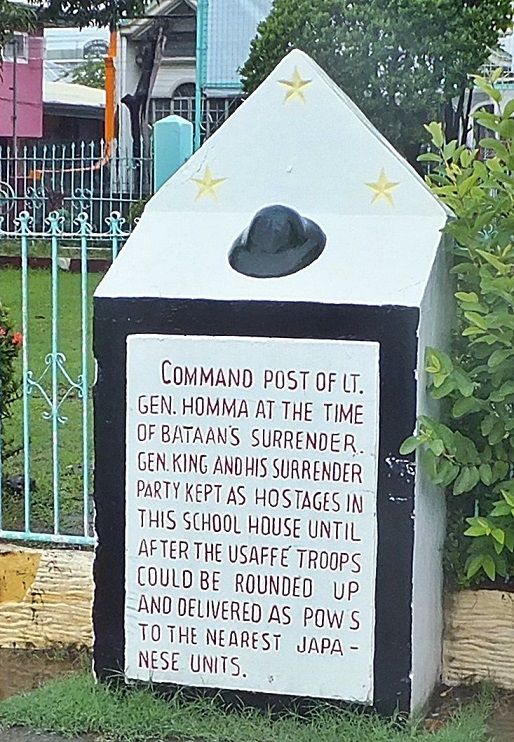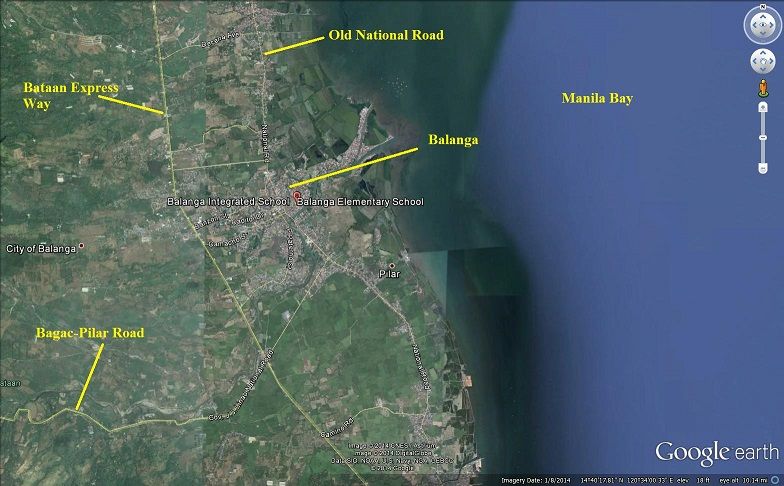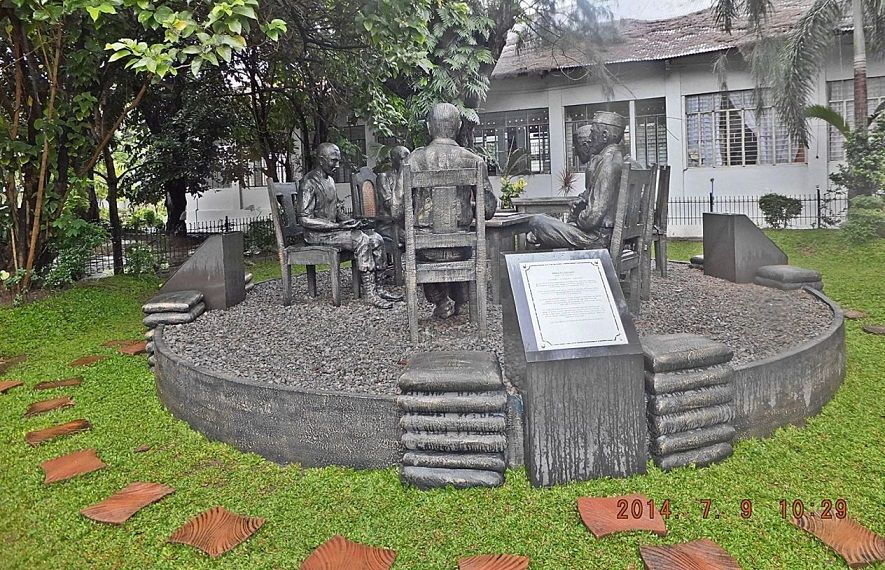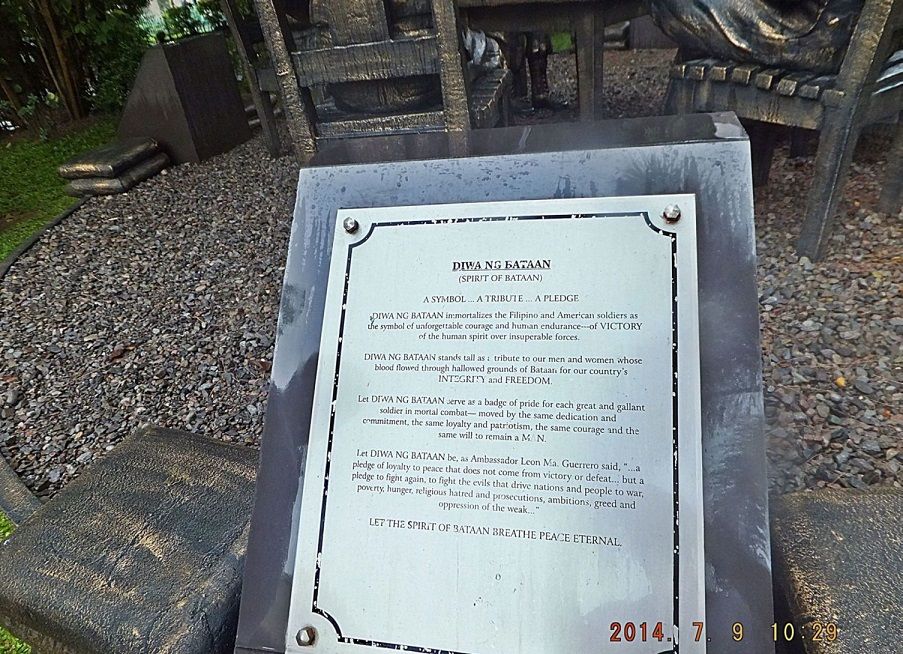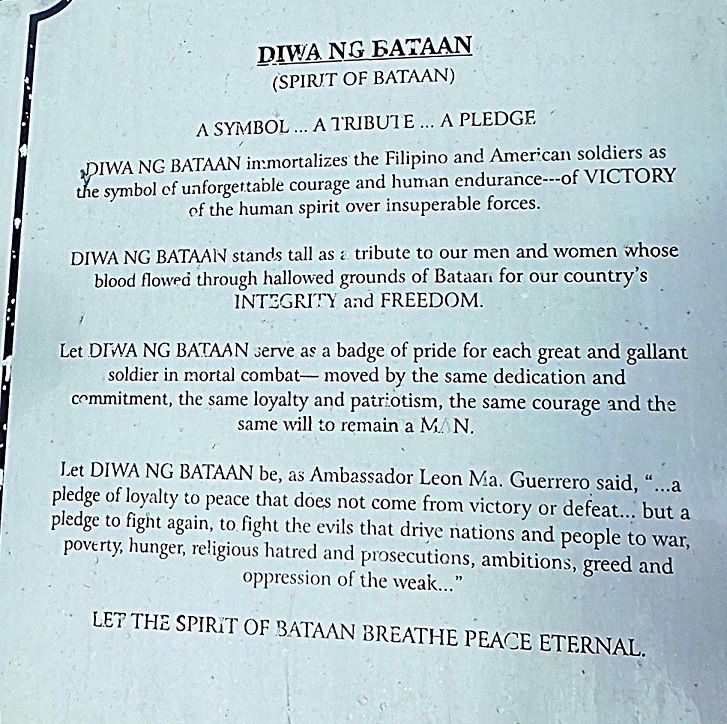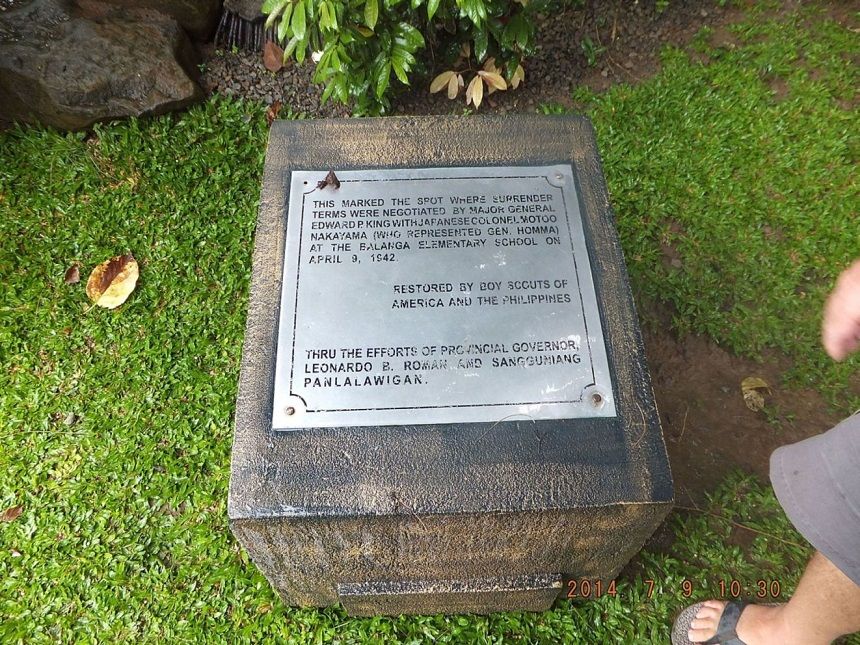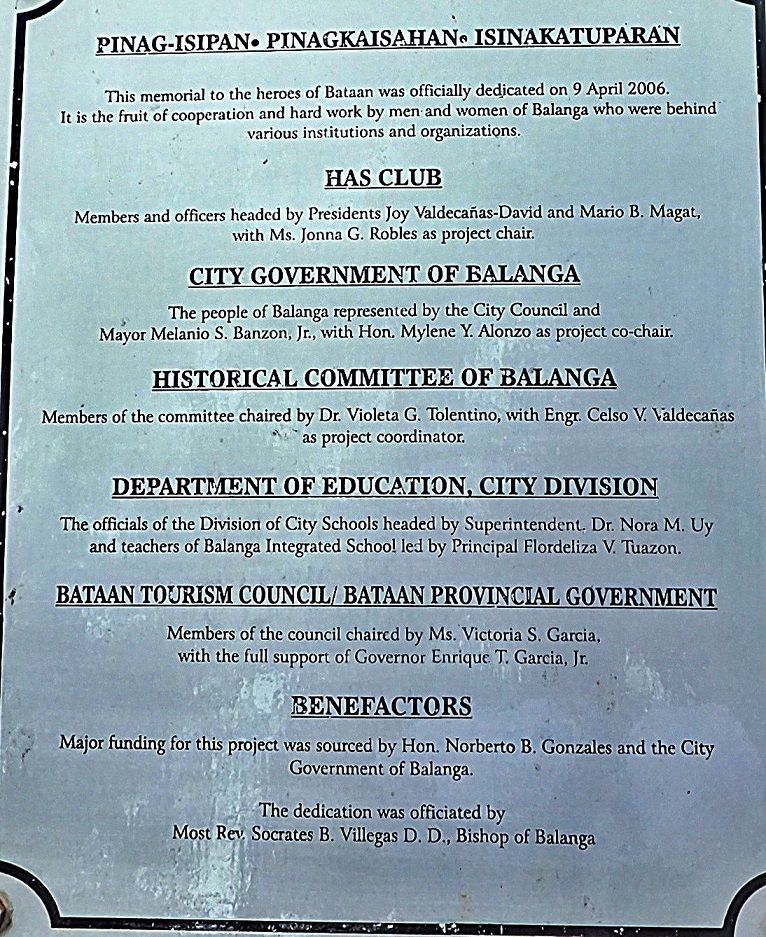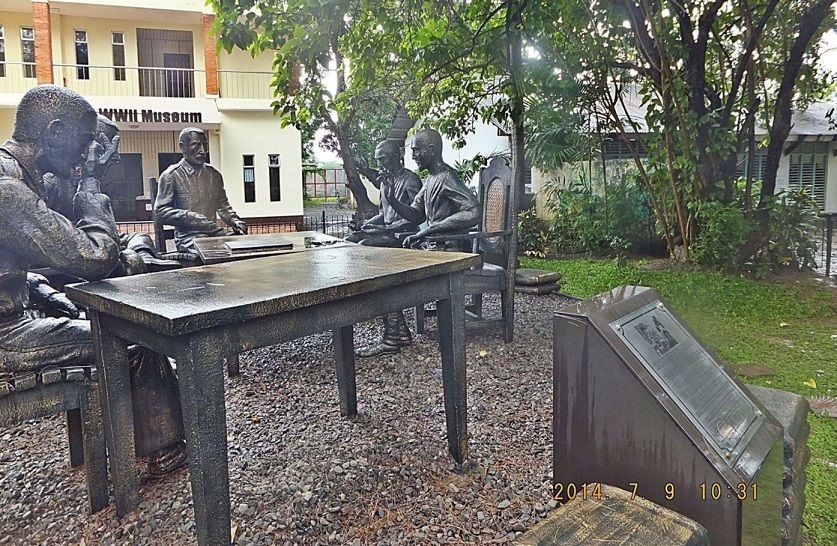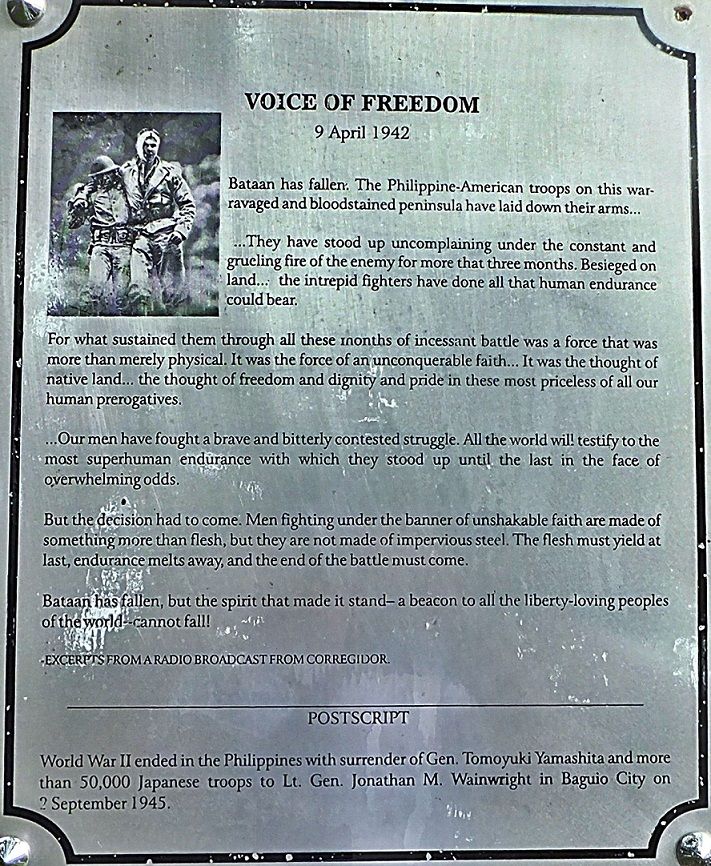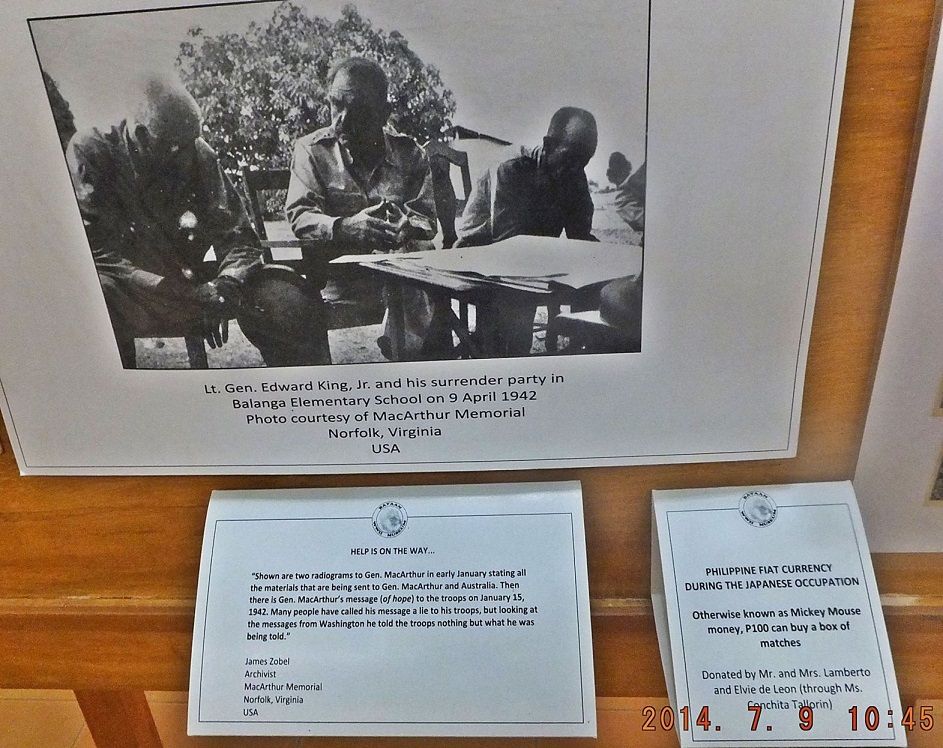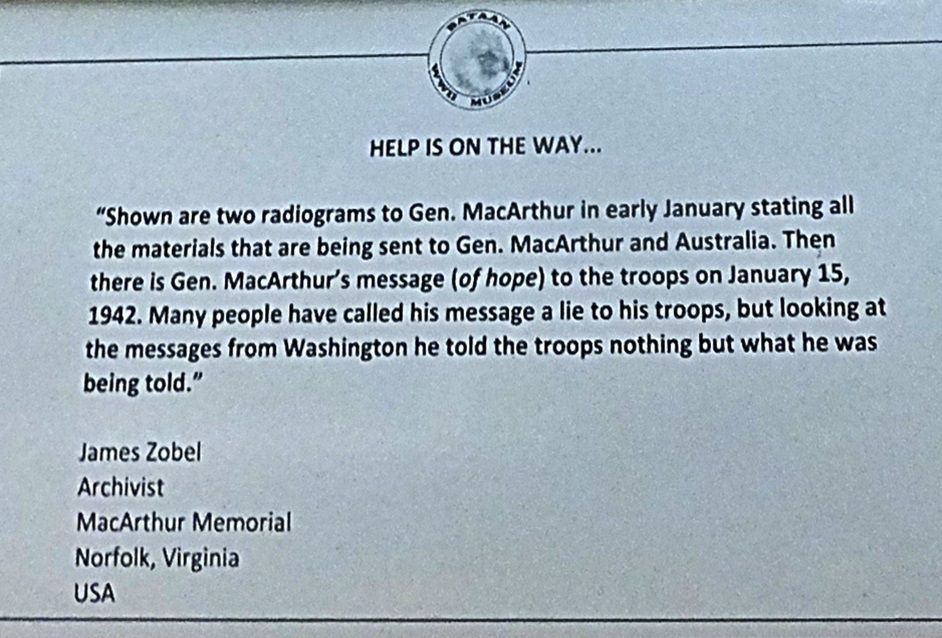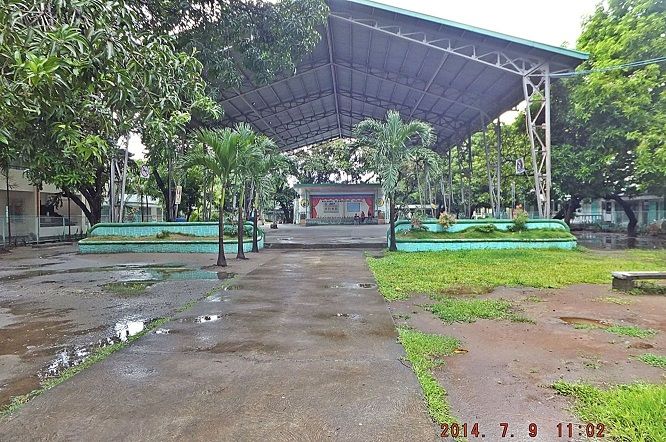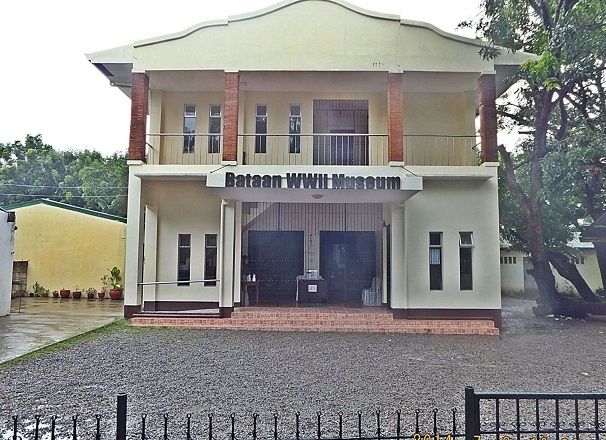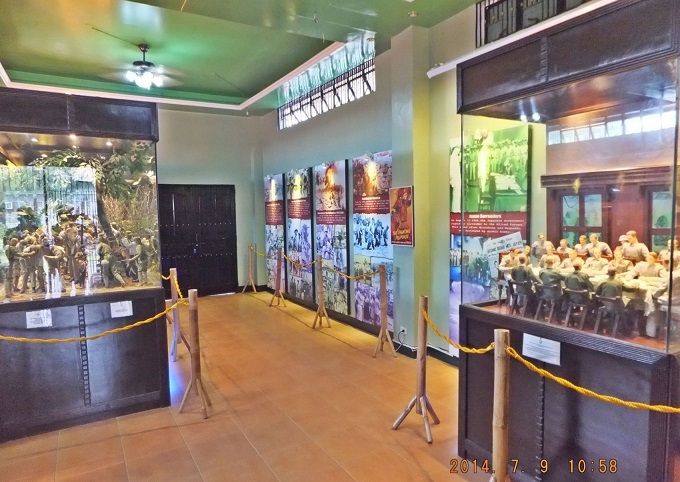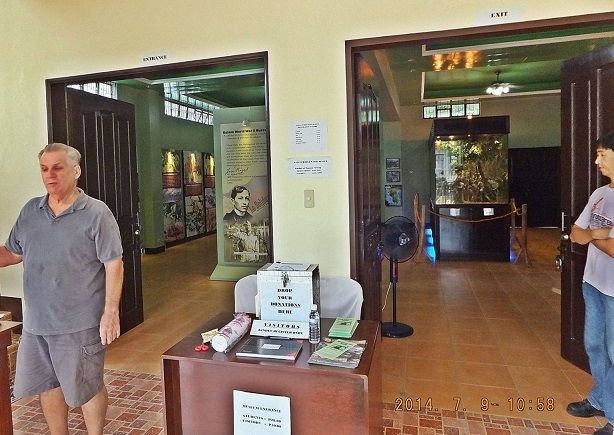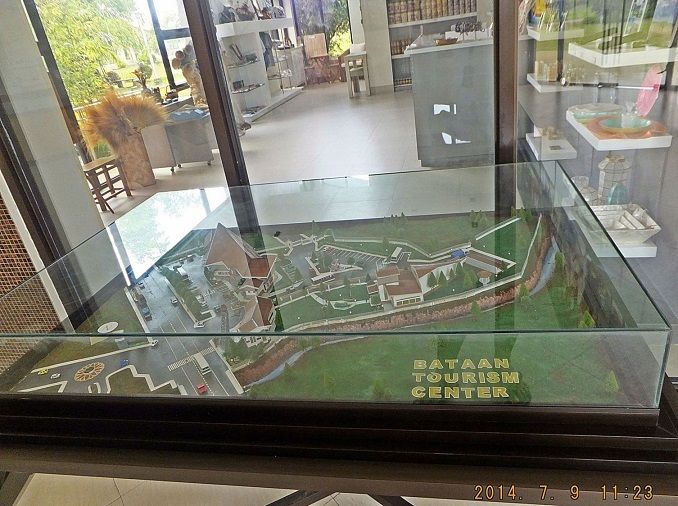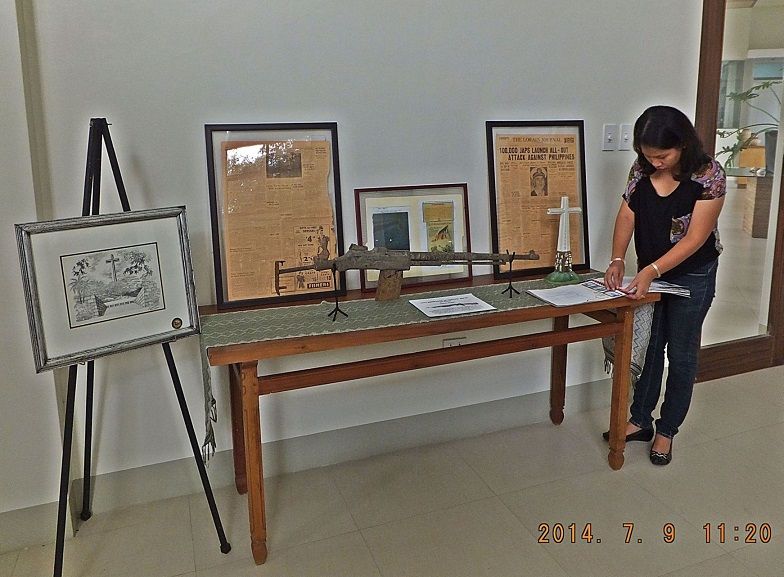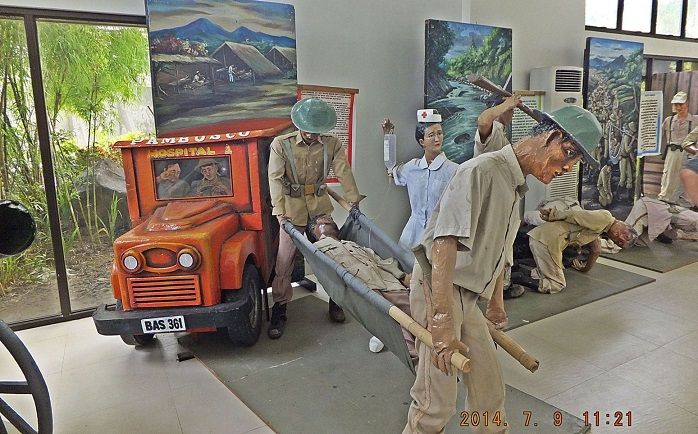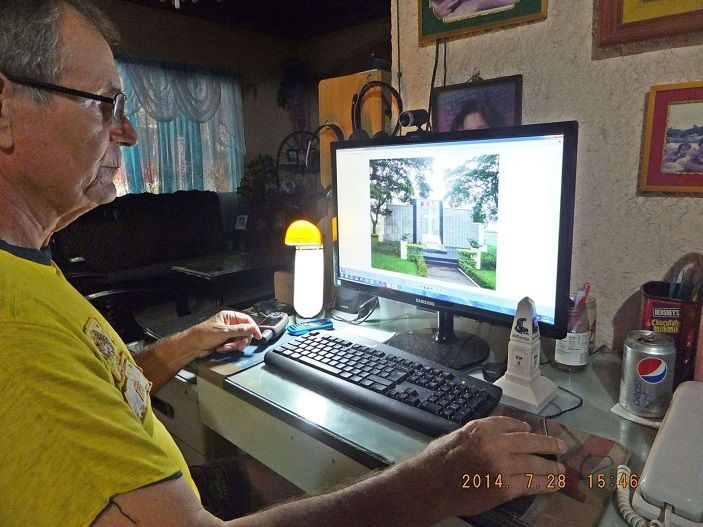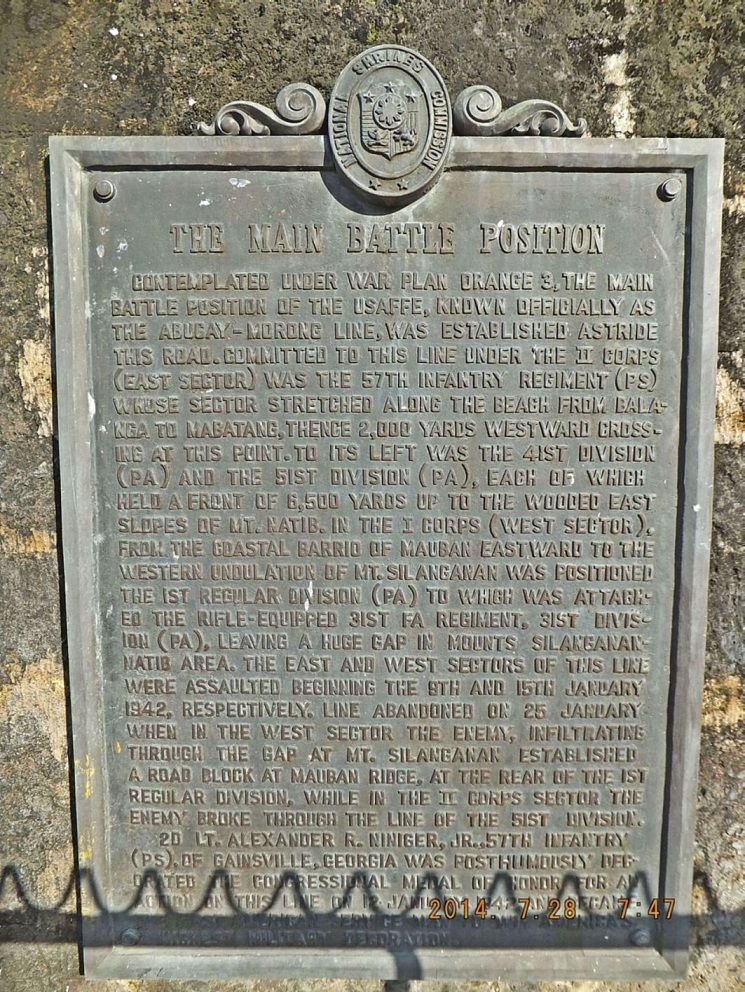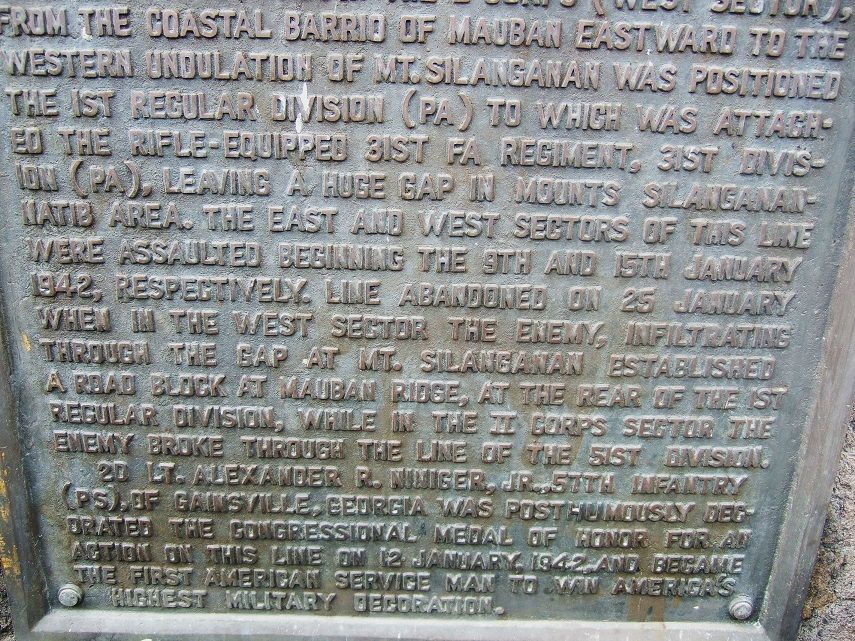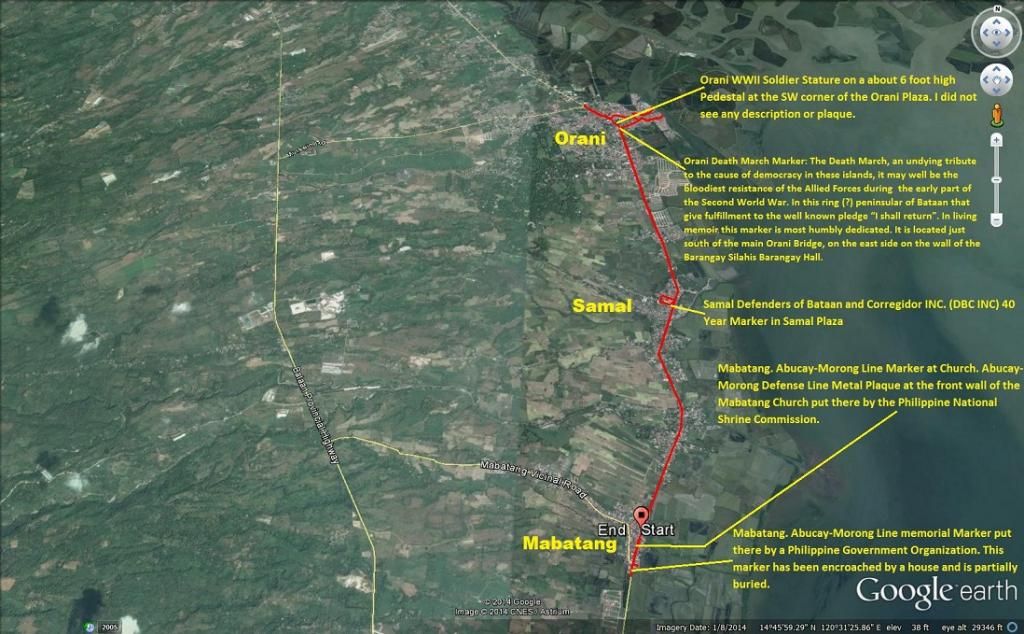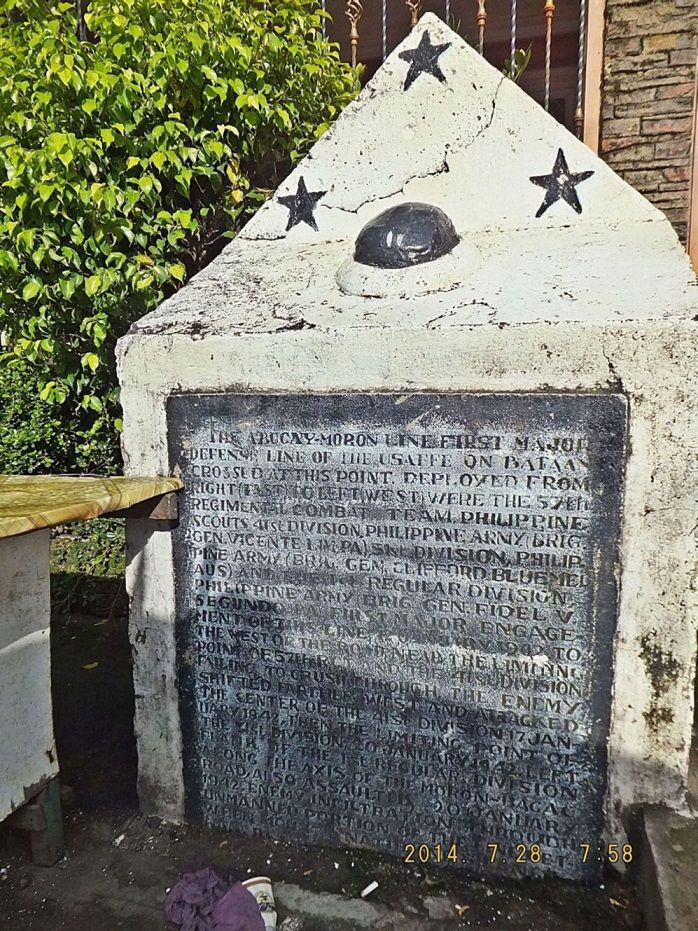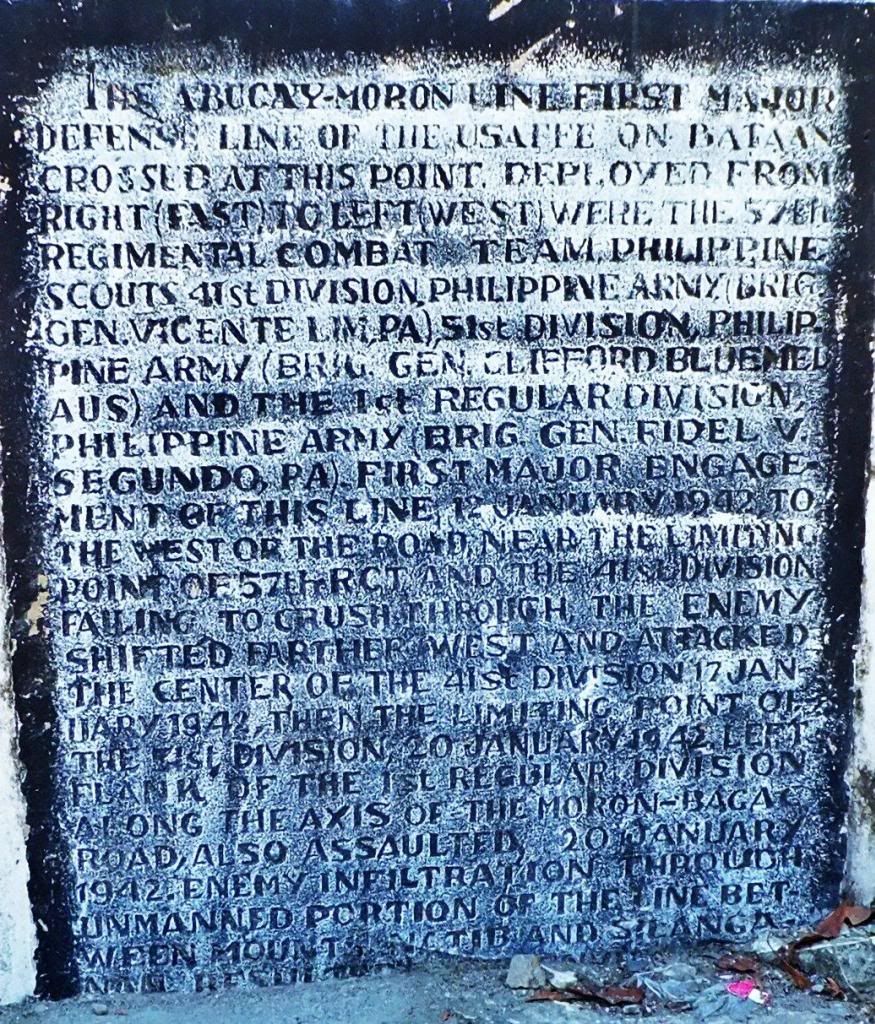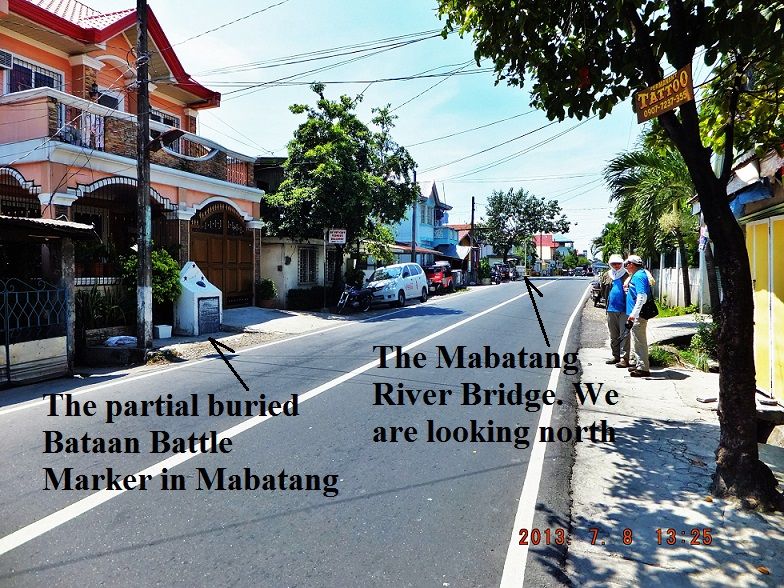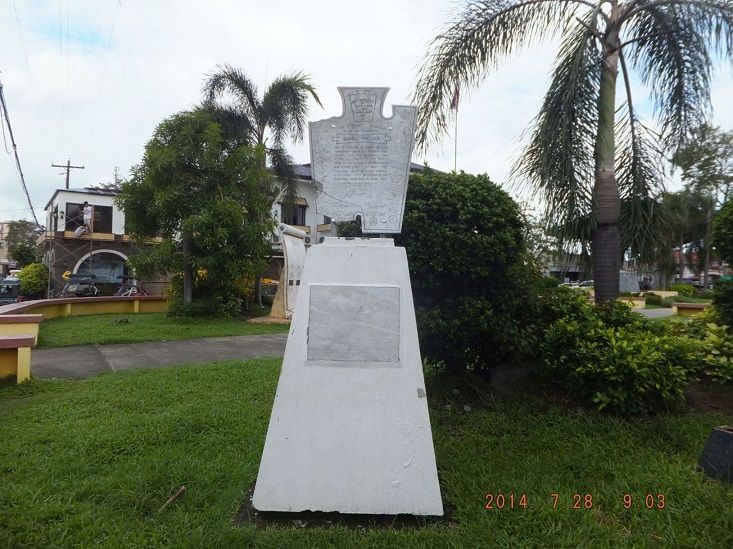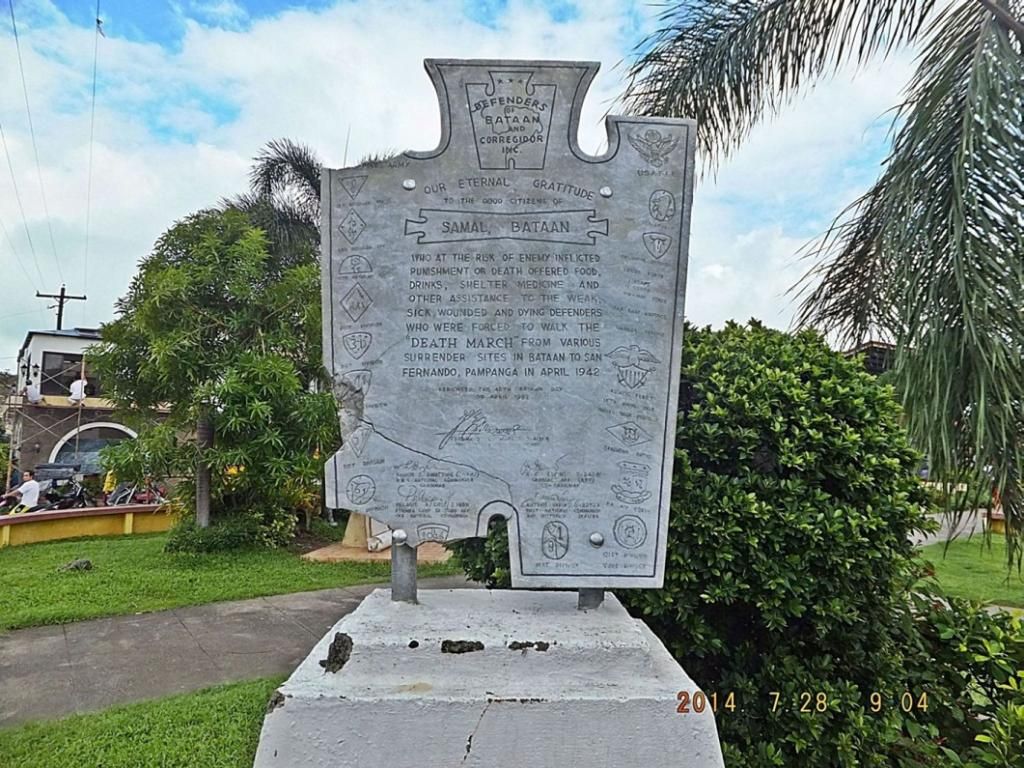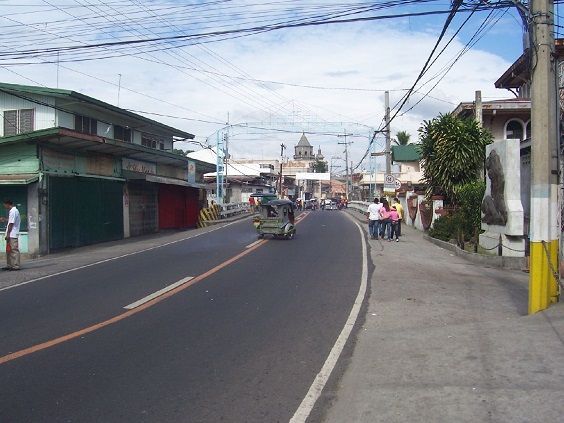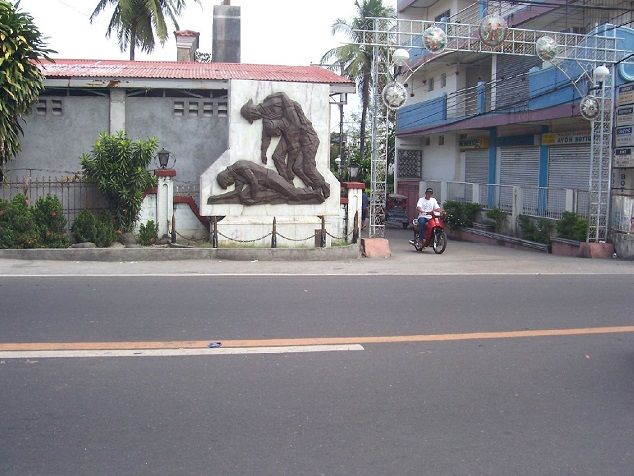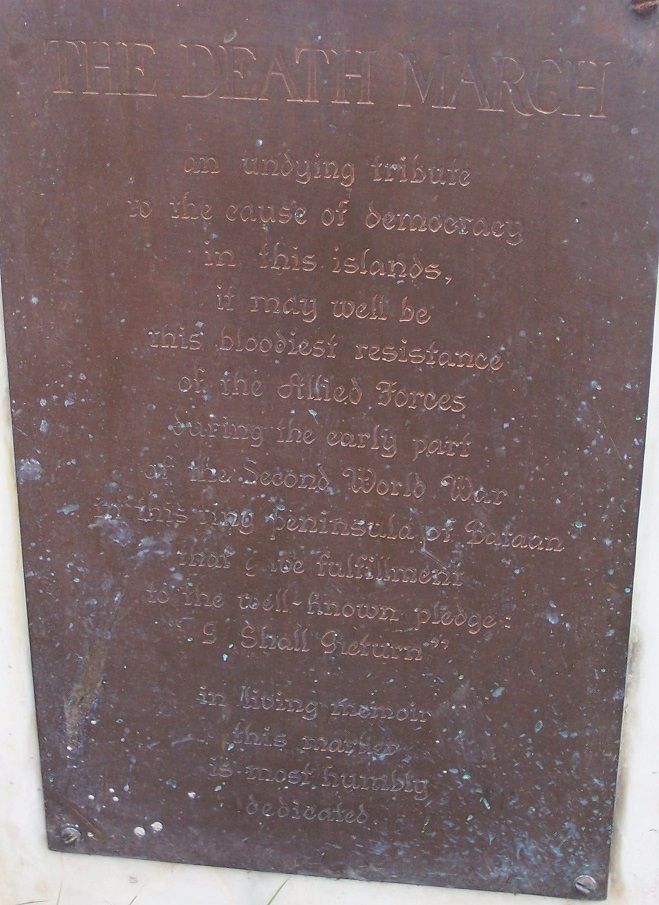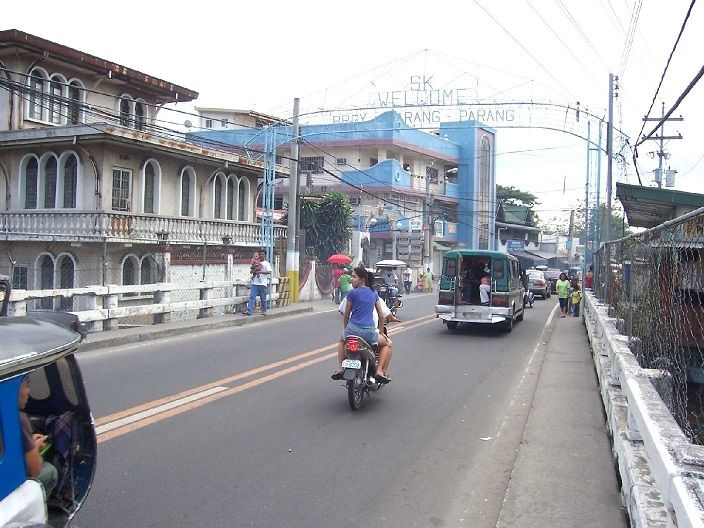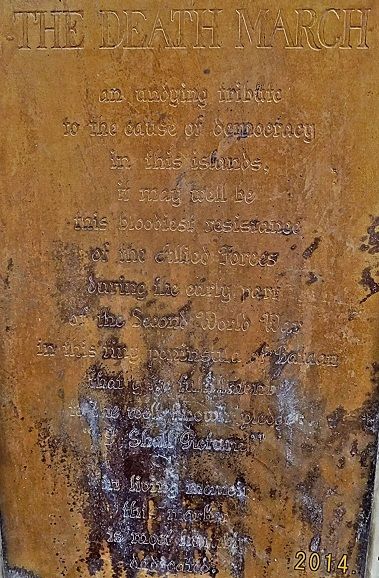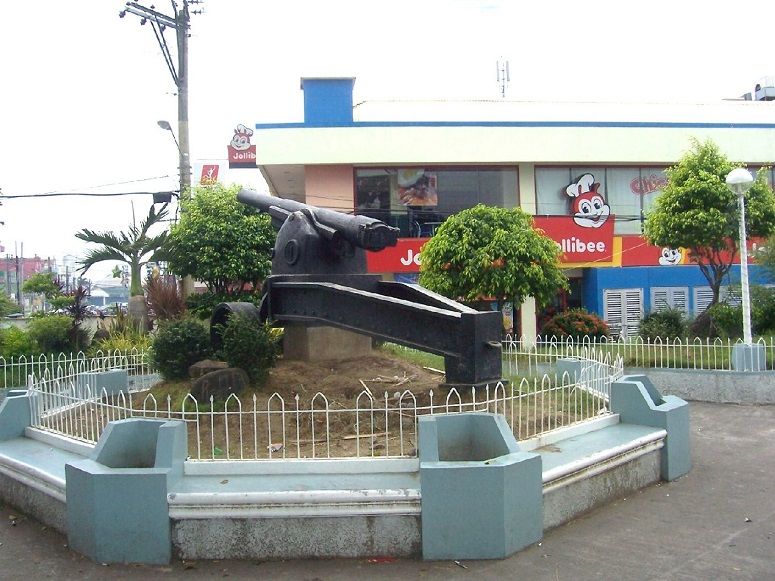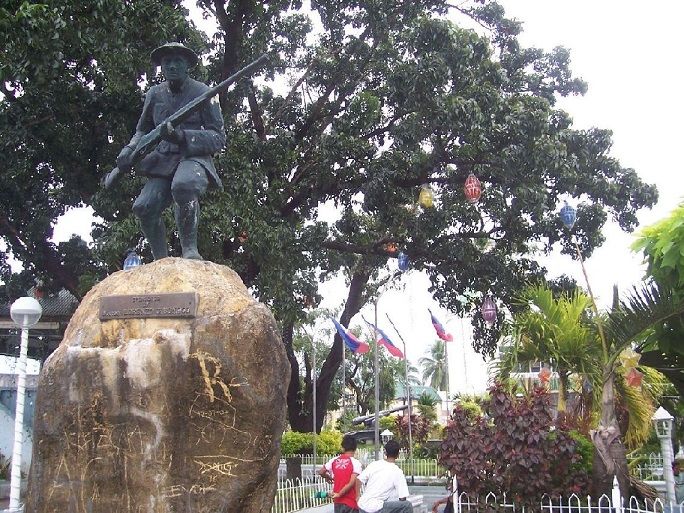Post by Karl Welteke on Jul 13, 2014 10:46:04 GMT 8
THE PHILIPPINE PEOPLE REMEMBER THE BATTLE OF BATAAN AND THE LIBERATION IN 1945.
We started this thread to put up the many memorials and commemoration markers people, organizations and Government placed on Bataan and other places over the past many decades.
This memorial to the heroes of Bataan was dedicated on the 9th April 2006; it is located on the school grounds of the premium Elementary School of Balanga City, Capitol of Bataan. Many organizations contributed to it and those details will be presented in the next segment.

Z541---Diwa ng Bataan (Spirit of Bataan) a Symbol, a Tribute, a Pledge Memorial.
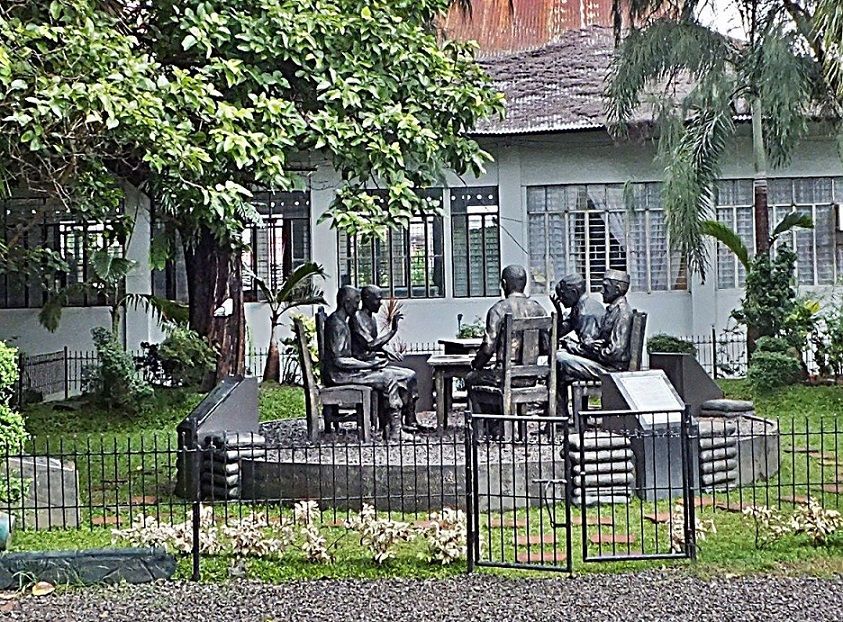
Z542---Diwa ng Bataan (Spirit of Bataan) a Symbol, a Tribute, a Pledge Memorial.
This segment is dedicated to the controversy as to where Gen. King surrendered because this memorial is also called the Final Surrender Location of Gen. King. However this spot of this memorial is important because Gen King and his surrender party was brought here on the 9th of April 1942 and were further interrogated on related matters. A famous picture was taken here with Gen. King and his Japanese captors sitting around tables. Gen. King and his surrender party were kept here as hostages for a period until all his Philippine and American Forces surrendered to the Imperial Japanese Forces.
The Battling Bastards of Bataan (BBB) have a relative short page about the surrender of Gen. King and his Bataan Forces. Here is the URL but I pasted the whole text here after:
battlingbastardsbataan.com/lamao.htm
The Bataan Surrender
(at Lamao, Bataan)
1. Gen. King met with his staff around 11:00 PM, on April 8. The discussions confirmed his belief that the situation was hopeless and to continue to resist would not accomplish anything, except to waste the lives of his men. Gen. King decides to surrender.
2. Orders were given to destroy ammunition dumps and existing hardware.
3. Arrangements were made to evacuate certain personnel to Corregidor.
4. Around 3:30 AM, April 9, Col. Everett C. Williams and Maj. Marshall H. Hurt volunteered to make contact with the Japanese. They decided to leave before sunrise. Gen. King gave Col. Williams a piece of paper requesting a meeting with the Japanese officer commanding the Bataan Army and gave Williams the authority to negotiate surrender, if the Japanese refused to see Gen. King. In the course of their journey, they get separated for spell and then reunited. They acquired a jeep and a driver. The three, then, proceeded driving north, towards Japanese lines.
5. Sometime after 5:30 AM, they were intercepted by Japanese troops. Col. Williams showed the Sergeant in charge the letter, from King, with his instructions. After some tense moments, the Japanese Sergeant boarded the American Jeep, and they drove north where they met Gen. Kameichiro Nagano.
6. Gen. Nagano agreed to meet Gen. King near the frontlines, at the experimental farm station near Lamao. The Japs retained Col. Williams and sent Maj. Hurt back to Gen. King.
7. A few minutes after 9:00 AM, Maj. Hurt returned to Gen. King’s headquarters. Soon after, Gen. King, Col. Collier, Maj. Wade R. Cothran, Capt. Tisdelle, and Maj. Hurt boarded two jeeps and drove towards the experimental farm, in Lamao. During their drive, they were strafed by Japanese planes. One of the jeep drivers was Pvt. Burns.
8. Japanese troops intercepted them at the Lamao River Bridge. Gen. King and his party were escorted to a house, at the experimental farm station, at Lamao. Gen. Nagano told Gen. King that a representative of the Japanese 14th Army would soon arrive.
9. A few minutes after 11:00 AM, Col. Motoo Nakayama, senior operations officer for the 14th Army, arrived. Col. Nakayama thought Gen. King was Gen. Wainwright. When Gen. King explained that he was not Gen. Wainwright, Col. Nakayama told Gen. King to go get Gen. Wainwright.
10. Gen. King explained he could not contact Gen. Wainwright and he only had authority to surrender the forces on Bataan, not the Filipino-American forces of the Philippines.
11. Col. Nakayama replied that he could not accept a piecemeal surrender of just the Bataan forces. He, again, told Gen. King that no surrender could be accepted or the cessation of hostilities would be granted without the presence of Gen. Wainwright surrendering the entire Filipino-American forces of the Philippines.
12. After more heated discussion and Col. Nakayama refusing to accept the surrender of the Bataan forces, Col. Nakayama agreed to accept the individual, unconditional surrender of Gen. King, as an individual. The distinction is that no force or entity was ever surrendered, since the surrender of only a part of the Filipino-American forces could not be accepted, by Col. Nakayama. There were no terms of surrender to be discussed. At this point, Col. Nakayama insisted on holding to his linguistic distinction between personal surrender and the surrender of a force.
13. Gen. King asked if he surrendered, would his troops be treated well. Col. Nakayama only replied, "We are not Barbarians." The aforementioned quote was the only surrender term Gen. King would receive from Col. Nakayama.
14. Gen. King agreed to surrender. The JAPs asked for Gen. King’s sword. Gen. King apologized and said he did not have his sword. He left it in Manila. He did convince them to take his pistol.
15. No surrender document was prepared or signed, nor was any effort made to formalize the surrender. The Japanese concluded that the surrender negotiations had failed. Col. Nakayama later wrote, "The surrender of the American Philippine Forces in the Bataan Peninsula was accomplished by the voluntary and unconditional surrender of each individual. The negotiations for the cessation of hostilities failed." From the Japanese perspective, no force was ever surrendered, only individuals surrendered.
16. Col. Nakayama left. Col. Collier and Maj. Hurt were allowed to return to the American lines with Gen. King’s order to surrender.
17. Gen. King, Col. Williams, Maj. Cothran, and Capt. Tisdelle were driven to Balanga, Bataan. They were taken to the Balanga Elementary School, where cameramen took photographs of them.
18. At the Balanga Elementary School, Gen. King and the other officers were interrogated by Col. Nakayama, again present, on the following points:
a) The number of Japanese prisoners held by the Americans.
b) The number of artillery pieces and tanks left on Bataan.
c) The number of troops and artillery pieces on Corregidor.
d) If there existed an underground tunnel from Mariveles to Corregidor.
e) If there existed caverns or tunnels where large reserves of artillery and ammo were kept.
19. King said all he had left were trucks and some gas for the trucks, so they may transport their troops to the destination the Japanese desired. Gen. King then asked, where his men be transported. The Japanese refused to answer. Col. Nakayama left.
20. The Japanese were angered by the repeated "No." and "I do not know." answers to their questions. A Japanese officer shouted at the guards to lock up Gen. King's party, in a nearby hut.
21. The important point is: at Balanga, there was never any discussion of surrender or of the surrender terms. They were there to be interrogated. Gen. King had surrendered himself at Lamao. From Lamao, he sent two officers from his party back to the American lines to order the rest of his troops to surrender to the Japanese. No formal surrender ever took place and nothing was ever signed. Only the nebulous (verbal) assurance of "We are not barbarians." was given as a term of surrender.
22. The confusion over the surrender site, probably, stems from the existence of the photographers at Balanga and not at Lamao. At Lamao, there were no reporters or cameramen to record the surrender. The photographs taken of Gen. King and his party, at Balanga, precipitated the falsehood of the surrender, at Balanga, when in fact, at Balanga; they were, merely, captured soldiers being interrogated.
23. Gen. King never met Gen. Masaharu Homma.
Fred Baldassarre
-I like to add the below material to support the observation in paragraph #22 above.
-Even today in one of the most official US Army publication, the Fall of the Philippines, Chapter XXVI, is this photograph and caption and here is the URL:
www.history.army.mil/books/wwii/5-2/5-2_26.htm
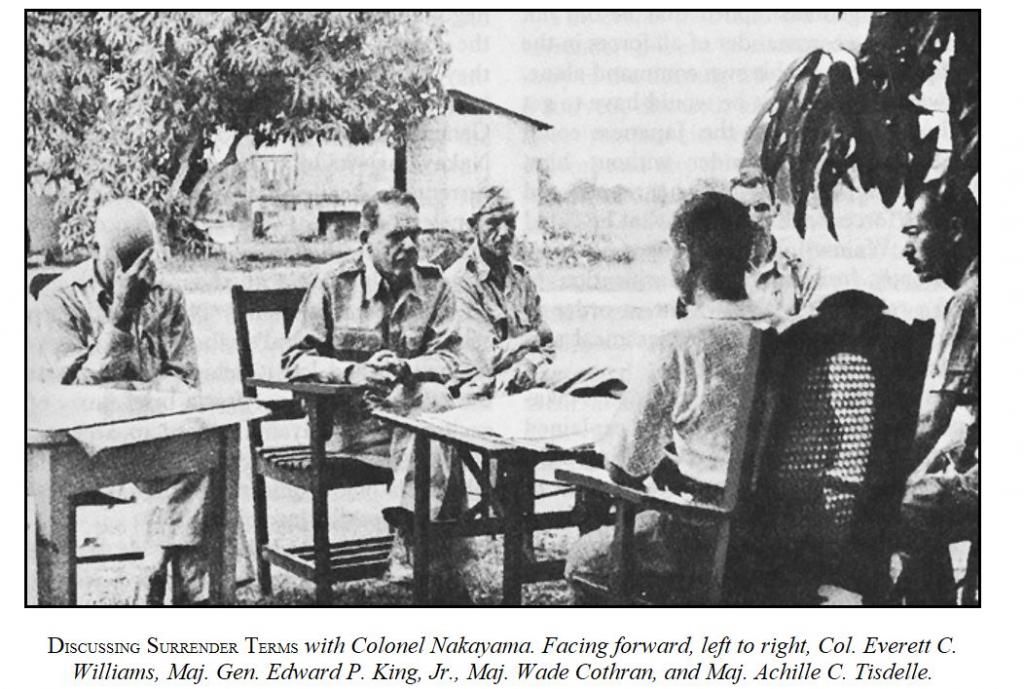
Z543---Image from the US Army publication Fall of the Philippines.
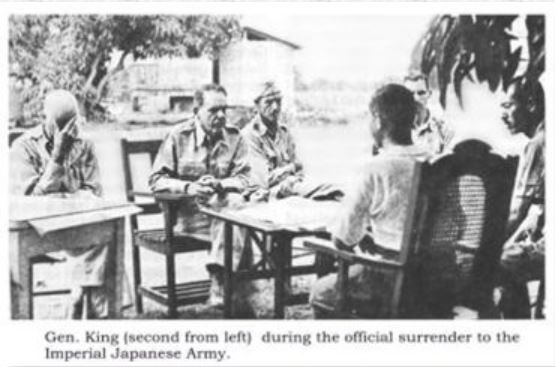
Z544---Image and URL from Gen. King’s Phi Delta Theta.
thephideltlegacy.com/articles/king/forgotten_general.html
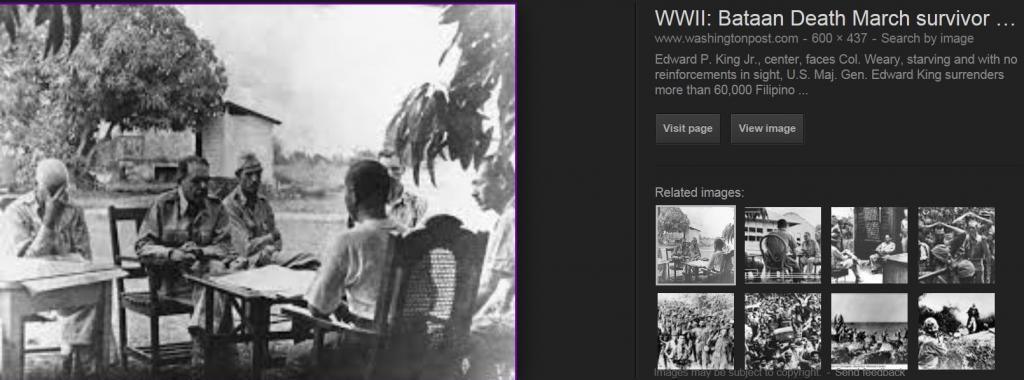
Z545---Here is the Washington Post saying the same thing.
We started this thread to put up the many memorials and commemoration markers people, organizations and Government placed on Bataan and other places over the past many decades.
This memorial to the heroes of Bataan was dedicated on the 9th April 2006; it is located on the school grounds of the premium Elementary School of Balanga City, Capitol of Bataan. Many organizations contributed to it and those details will be presented in the next segment.

Z541---Diwa ng Bataan (Spirit of Bataan) a Symbol, a Tribute, a Pledge Memorial.

Z542---Diwa ng Bataan (Spirit of Bataan) a Symbol, a Tribute, a Pledge Memorial.
This segment is dedicated to the controversy as to where Gen. King surrendered because this memorial is also called the Final Surrender Location of Gen. King. However this spot of this memorial is important because Gen King and his surrender party was brought here on the 9th of April 1942 and were further interrogated on related matters. A famous picture was taken here with Gen. King and his Japanese captors sitting around tables. Gen. King and his surrender party were kept here as hostages for a period until all his Philippine and American Forces surrendered to the Imperial Japanese Forces.
The Battling Bastards of Bataan (BBB) have a relative short page about the surrender of Gen. King and his Bataan Forces. Here is the URL but I pasted the whole text here after:
battlingbastardsbataan.com/lamao.htm
The Bataan Surrender
(at Lamao, Bataan)
1. Gen. King met with his staff around 11:00 PM, on April 8. The discussions confirmed his belief that the situation was hopeless and to continue to resist would not accomplish anything, except to waste the lives of his men. Gen. King decides to surrender.
2. Orders were given to destroy ammunition dumps and existing hardware.
3. Arrangements were made to evacuate certain personnel to Corregidor.
4. Around 3:30 AM, April 9, Col. Everett C. Williams and Maj. Marshall H. Hurt volunteered to make contact with the Japanese. They decided to leave before sunrise. Gen. King gave Col. Williams a piece of paper requesting a meeting with the Japanese officer commanding the Bataan Army and gave Williams the authority to negotiate surrender, if the Japanese refused to see Gen. King. In the course of their journey, they get separated for spell and then reunited. They acquired a jeep and a driver. The three, then, proceeded driving north, towards Japanese lines.
5. Sometime after 5:30 AM, they were intercepted by Japanese troops. Col. Williams showed the Sergeant in charge the letter, from King, with his instructions. After some tense moments, the Japanese Sergeant boarded the American Jeep, and they drove north where they met Gen. Kameichiro Nagano.
6. Gen. Nagano agreed to meet Gen. King near the frontlines, at the experimental farm station near Lamao. The Japs retained Col. Williams and sent Maj. Hurt back to Gen. King.
7. A few minutes after 9:00 AM, Maj. Hurt returned to Gen. King’s headquarters. Soon after, Gen. King, Col. Collier, Maj. Wade R. Cothran, Capt. Tisdelle, and Maj. Hurt boarded two jeeps and drove towards the experimental farm, in Lamao. During their drive, they were strafed by Japanese planes. One of the jeep drivers was Pvt. Burns.
8. Japanese troops intercepted them at the Lamao River Bridge. Gen. King and his party were escorted to a house, at the experimental farm station, at Lamao. Gen. Nagano told Gen. King that a representative of the Japanese 14th Army would soon arrive.
9. A few minutes after 11:00 AM, Col. Motoo Nakayama, senior operations officer for the 14th Army, arrived. Col. Nakayama thought Gen. King was Gen. Wainwright. When Gen. King explained that he was not Gen. Wainwright, Col. Nakayama told Gen. King to go get Gen. Wainwright.
10. Gen. King explained he could not contact Gen. Wainwright and he only had authority to surrender the forces on Bataan, not the Filipino-American forces of the Philippines.
11. Col. Nakayama replied that he could not accept a piecemeal surrender of just the Bataan forces. He, again, told Gen. King that no surrender could be accepted or the cessation of hostilities would be granted without the presence of Gen. Wainwright surrendering the entire Filipino-American forces of the Philippines.
12. After more heated discussion and Col. Nakayama refusing to accept the surrender of the Bataan forces, Col. Nakayama agreed to accept the individual, unconditional surrender of Gen. King, as an individual. The distinction is that no force or entity was ever surrendered, since the surrender of only a part of the Filipino-American forces could not be accepted, by Col. Nakayama. There were no terms of surrender to be discussed. At this point, Col. Nakayama insisted on holding to his linguistic distinction between personal surrender and the surrender of a force.
13. Gen. King asked if he surrendered, would his troops be treated well. Col. Nakayama only replied, "We are not Barbarians." The aforementioned quote was the only surrender term Gen. King would receive from Col. Nakayama.
14. Gen. King agreed to surrender. The JAPs asked for Gen. King’s sword. Gen. King apologized and said he did not have his sword. He left it in Manila. He did convince them to take his pistol.
15. No surrender document was prepared or signed, nor was any effort made to formalize the surrender. The Japanese concluded that the surrender negotiations had failed. Col. Nakayama later wrote, "The surrender of the American Philippine Forces in the Bataan Peninsula was accomplished by the voluntary and unconditional surrender of each individual. The negotiations for the cessation of hostilities failed." From the Japanese perspective, no force was ever surrendered, only individuals surrendered.
16. Col. Nakayama left. Col. Collier and Maj. Hurt were allowed to return to the American lines with Gen. King’s order to surrender.
17. Gen. King, Col. Williams, Maj. Cothran, and Capt. Tisdelle were driven to Balanga, Bataan. They were taken to the Balanga Elementary School, where cameramen took photographs of them.
18. At the Balanga Elementary School, Gen. King and the other officers were interrogated by Col. Nakayama, again present, on the following points:
a) The number of Japanese prisoners held by the Americans.
b) The number of artillery pieces and tanks left on Bataan.
c) The number of troops and artillery pieces on Corregidor.
d) If there existed an underground tunnel from Mariveles to Corregidor.
e) If there existed caverns or tunnels where large reserves of artillery and ammo were kept.
19. King said all he had left were trucks and some gas for the trucks, so they may transport their troops to the destination the Japanese desired. Gen. King then asked, where his men be transported. The Japanese refused to answer. Col. Nakayama left.
20. The Japanese were angered by the repeated "No." and "I do not know." answers to their questions. A Japanese officer shouted at the guards to lock up Gen. King's party, in a nearby hut.
21. The important point is: at Balanga, there was never any discussion of surrender or of the surrender terms. They were there to be interrogated. Gen. King had surrendered himself at Lamao. From Lamao, he sent two officers from his party back to the American lines to order the rest of his troops to surrender to the Japanese. No formal surrender ever took place and nothing was ever signed. Only the nebulous (verbal) assurance of "We are not barbarians." was given as a term of surrender.
22. The confusion over the surrender site, probably, stems from the existence of the photographers at Balanga and not at Lamao. At Lamao, there were no reporters or cameramen to record the surrender. The photographs taken of Gen. King and his party, at Balanga, precipitated the falsehood of the surrender, at Balanga, when in fact, at Balanga; they were, merely, captured soldiers being interrogated.
23. Gen. King never met Gen. Masaharu Homma.
Fred Baldassarre
-I like to add the below material to support the observation in paragraph #22 above.
-Even today in one of the most official US Army publication, the Fall of the Philippines, Chapter XXVI, is this photograph and caption and here is the URL:
www.history.army.mil/books/wwii/5-2/5-2_26.htm

Z543---Image from the US Army publication Fall of the Philippines.

Z544---Image and URL from Gen. King’s Phi Delta Theta.
thephideltlegacy.com/articles/king/forgotten_general.html

Z545---Here is the Washington Post saying the same thing.



